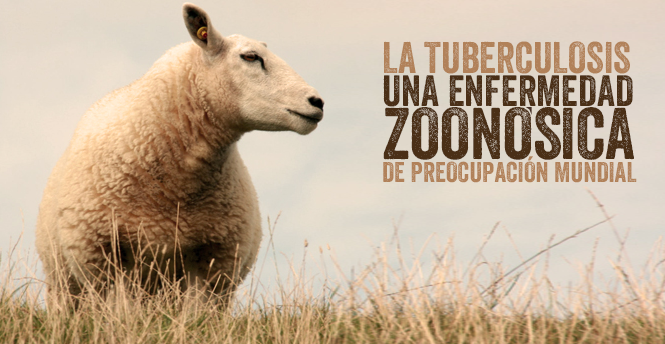Tuberculosis, a zoonotic disease of global concern
We review two articles published this month that bring us closer to recent researchs of this disease
April 28th, 2021

Animal tuberculosis, which is caused by the Mycobacterium tuberculosis complex, is a zoonotic disease of global concern, and has a wide variety of wild and domestic reservoirs that can establish complex epidemiological systems. The main etiologic agent of tuberculosis in livestock is Mycobacterium bovis; human tuberculosis cases caused by M. bovis are rare. However this species also infects humans through inhalation or ingestion and causes tuberculosis that is clinically indistinguishable from that caused by M. tuberculosis.
Researchers from IREC, VISAVET, SABIOTEC and the Veterinary Faculties of UCM and UCO have published this month an article in the journal Preventive Veterinary Medicine describing On-farm Wildlife Risk Mitigation Protocol that is applicable to beef cattle farming in Mediterranean environments in order to control the wildlife-livestock interaction and mycobacteria transmission through the use of Farm-specific Action Plans. Of all the strategies employed to control TB, reducing the risks of interaction at the wildlife-livestock interface is a cornerstone. However, detailed protocols with which to assess and implement farm-specific preventive actions that can be employed against interactions with wildlife are lacking for extensive production systems. The results indicate that the adoption of this On-farm Wildlife Risk Mitigation Protocol is practical and feasible in Mediterranean ecosystems, and can be easily transferred to professionals and adapted to other bioregions or epidemiological systems. The subsequent evaluation of Farm-specific Action Plans in terms of efficacy and cost-effectiveness, along with increasing their acceptance by farmers, are necessary steps for the further development of TB Risk Mitigation Programmes at a nationwide level.
On the other hand, a study by CRESA-IRTA, VISAVET, Vall d'Hebron University Hospital and ISCIII, describes how the nalysis of a tuberculosis outbreak caused by polyresistant M. bovis involving a human and sympatric sheep in Spain suggests local circulation of drug-resistant M. bovis strains among livestock. This study published in the journal Emerging Infectious Diseases, describes a case of pulmonary tuberculosis caused by M. bovis in a human worked as a farmer on cattle and small ruminant farms. Antimicrobial resistance testing revealed a strain resistant to 3 first-line anti-tuberculosis drugs; pyrazinamide, isoniazid and ethionamide, an antimicrobial drug specifically used to treat active multidrug-resistant tuberculosis. Molecular characterization by direct variable repeat (DVR)-spoligotyping identified the isolates as M. bovis spoligopattern SB0124. Distinguishing between TB causative organisms is crucial for epidemiologic investigation and adequate treatment of TB in humans. The One Health approach should be implemented in contact investigations for TB cases through coordination of public and animal health authorities to prevent spread of TB between humans and livestock. Controlling TB in small ruminants and studying drug resistance in strains circulating among livestock should also be considered.
VISAVET Health Surveillance Centre
Complutense University
